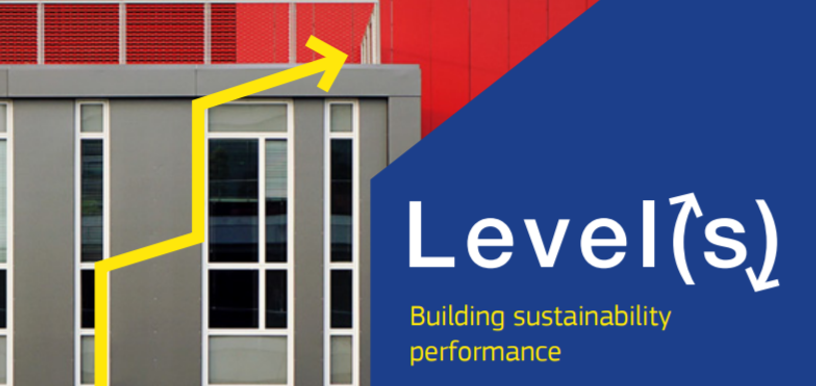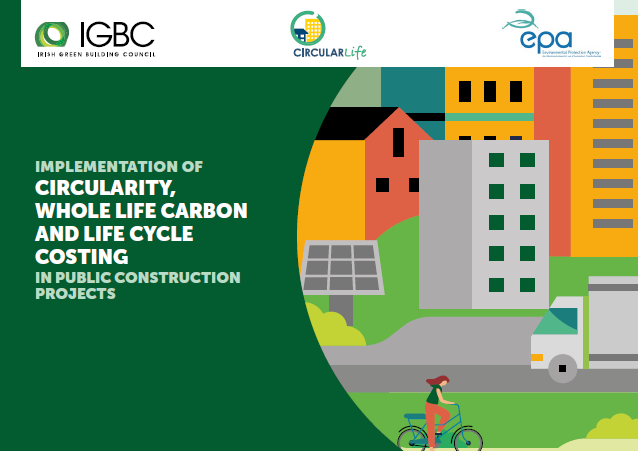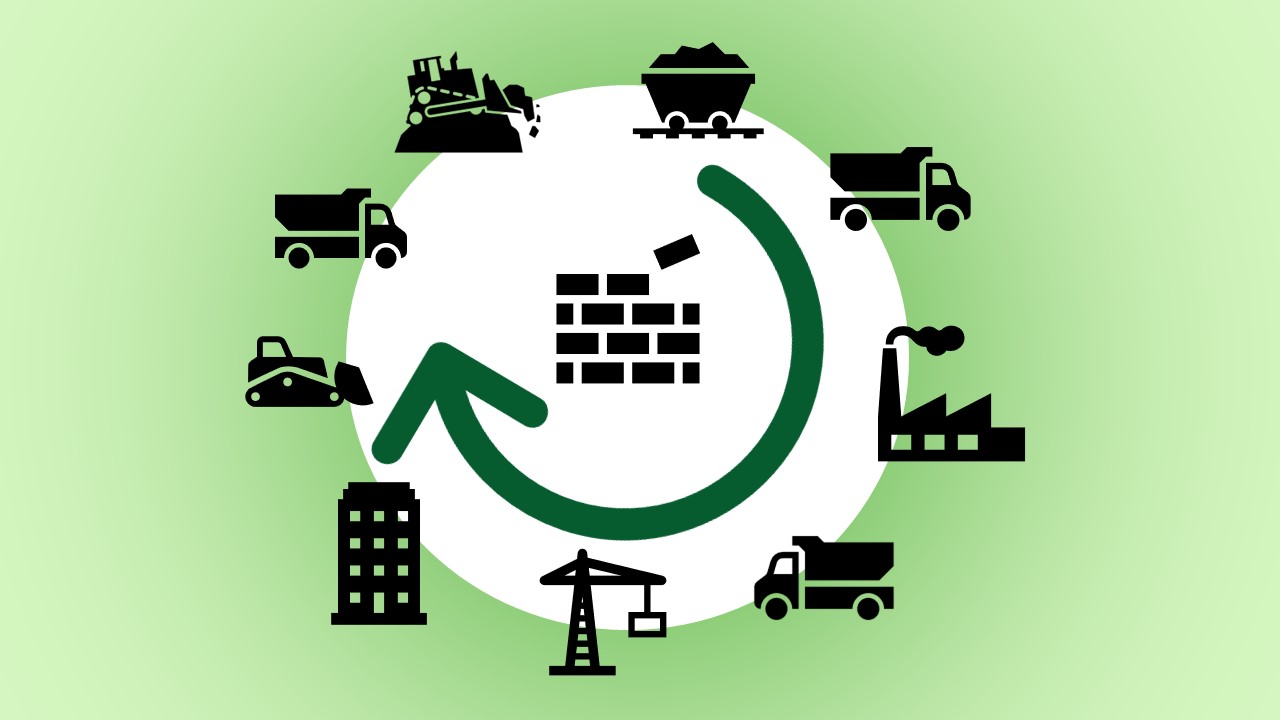Table of Contents
1. What is the Level(s) framework?
2. What are Level(s) Objectives
3. What does the Level(s) involve?
4. What do the Level(s) indicators cover?
5. Level(s) and Life Cycle Assessment Training?
6. Life Level(s) Project
7. Life Level(s) Commitment
1. What is the Level(s) framework?
Level(s) is the EU initiative that joins up sustainable building thinking across the EU by offering guidance on the key areas of sustainability in the built environment and how to measure them during design and after completion.
2. What are Level(s) Objectives?
Level(s) framework aims to get us all talking the same language so we can share best practice and learn from each other using the same  metrics.
metrics.
A second aim is to promote the use of life cycle assessment (LCA) and life cycle costing (LCC) to help understand the quantities and timings of environmental impacts (LCA) in parallel with the most cost-effective approaches to reducing them (LCC).
LCA can be described as a method for assessing the future environmental performance of a building. It is done as early as possible in the design stages when it is still possible to make interventions to improve performance before decisions get ‘locked in’. This can become increasingly difficult and costly if left until later.
LCA is based on possible scenarios for the future life of the project. Scenarios are developed by posing questions around how the building will be used, how its environment may change, how the market or its occupants needs may change, what technology may be available in future to upgrade and modernise the building, and what effects may come from a decarbonising grid.
By undertaking LCA early in a project, environmental impacts can be assessed and the most significant – the hotspots – can be identified and used as a starting point for enhancing performance.
Level(s) framework aims to get us all talking the same language so we can share best practice and learn from each other using the same metrics.
3. What does the Level(s) involve?
Levels is delivered in the form of User Manuals and reporting templates. Each manual explains a sustainability concept, how to implement it and how to record and measure the results (using the templates). They can be used individually as standalone concepts but work better when approached as a suite (as there is some overlap).
They are available for free download here.
These documents help project design teams focus on sustainability aspects and provide guidance on how to make accurate performance assessments. They also address the needs of clients and investors by offering advice on how cost and risk can be future-proofed by extending flexibility and lifespans and enhancing the long-term value of assets.
For policy Level(s) offers a clear set of prioritised performance indicators to focus on, together with a standardised basis for setting requirements. It provides a foundation that can contribute to carbon reduction target setting and broader sustainability objectives.
4. What do the Level(s) indicators cover?
At first glance Level(s) could be mistaken for another building certification scheme, but unlike such schemes, it doesn’t set benchmarks and is actually more of a set of tools to help the above groups think about the many aspects of what sustainability means today. It is based on six overarching macro-objectives;
- Greenhouse gas emissions along a building’s life cycle
- Resource efficient and circular material lifecycles
- Efficient use of water resources
- Healthy and comfortable spaces
- Adaptation and resilience
- Optimised life cycle cost and value
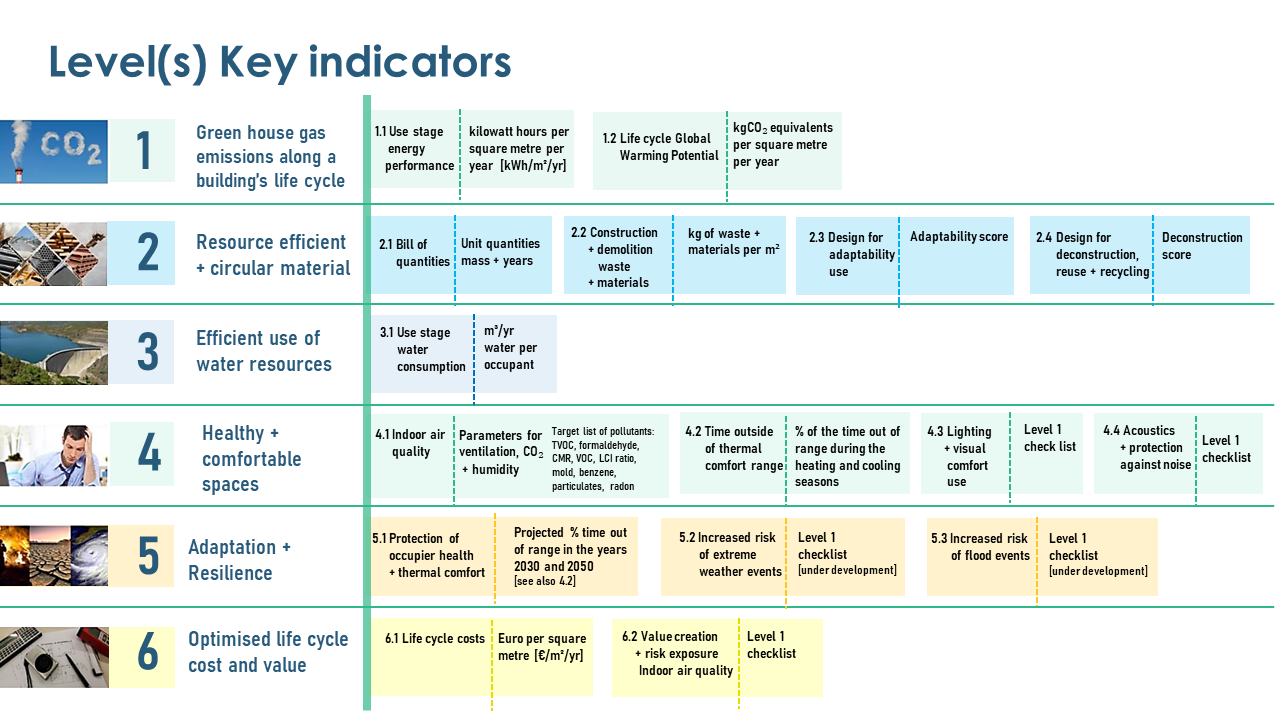
In turn these are each supported by between two and four measurable indicators. As well as carbon emissions and costs, there are tools for measuring other aspects such as the likely wastage streams from site, how adaptable a design may be in the future, and just how recyclable it is.
The three ‘levels’ involved synchronise with the workflow of a design and build project.
Level one guidance is all about informing yourself at the early stages of design. There are no metrics here, it is background reading on the subject to bring you up to speed quickly and guide your thinking on what is relevant and important to you and your client.
Level two is about taking a deeper dive into the areas you have identified as your main priorities and quantifying actuals in your technical designs to help make decisions based on data. There are recommendations on the international standards to use and the methodology that may be applied.
Finally, level three looks at actual monitoring and feedback, whether this be comparing actual on site waste recycling to your level two estimates or on-going post occupancy monitoring of comfort, energy, water or other building performance. It’s there to establish what works in practice compared to the models.
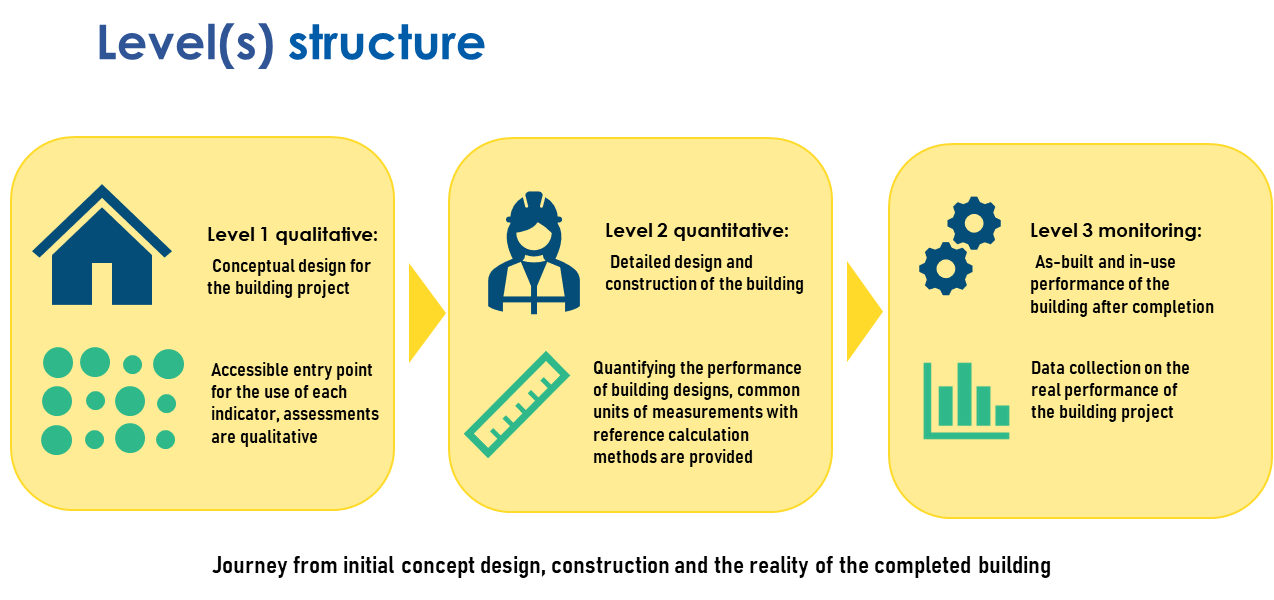
Because all the indicators relate to the same building description template you complete at the start, they make buildings more easily comparable, which should contribute to the development of national metrics for each member state. As Europe’s climate and building stock requirements are not homogenous, benchmarks will not be set at EU level and instead, EU member states are encouraged to develop their own.
The Irish Green Building Council is currently working towards aligning its own building certification scheme, the Home Performance Index, with Level(s). The aim is to create guidance that allows housebuilders to be sure they are focusing on the right metrics for both sustainability and long-term value.
5.Level(s) and Life Cycle Assessment Training
The IGBC is currently offering an introductory course to help practitioners understand the methodology and mechanics of Indicator 1.2: life cycle global warming potential (GWP) and how to carry out a compliant Level 2 assessment using the online OneClickLCA tool.
Indicator 1.2 takes a whole life carbon approach – incorporating design decisions that are also addressed in some of the other indicators, such as indicator 1.1 (use stage energy consumption), indicator 2.1 (bill of quantities, materials and lifespans), indicator 2.2 (construction and demolition waste and materials), indicator 2.3 (design for adaptability and renovation) and indicator 2.4 (design for deconstruction and recycling). This gives the design team a useful overarching view when considering the future of any building project. For details of the next course read more here.
If you want an introduction to Level(s) you can also watch this webinar. (Free for members here)
If you have explored the introduction to Level(s) on the European Commission website and are looking for examples of how you might use the framework in practice, then this series of two factsheets is for you.
Putting Circularity into Practice
Putting Whole Life Carbon into Practice
The Irish Green Building Council is partnering with 8 European Green Building Council to mainstream sustainable buildings in Europe through greater awareness and use of the specified indicators within the framework of Level(s). The key indicators are Life cycle assessment (LCA), Life cycle costing (LCC) and Indoor air quality (IAQ).
The project partners developed a Best Practice Guide to Support Incorporating Level(s) Indicators into Public Procurement Processes.
The Guide consists of :
- Level(s) Framework overview explaining what is this methodology and how it works.
- Preview of the 3 selected indicators: LCA (life cycle assessment), IAQ (indoor air quality), LCC (life cycle costing)
- A state of the art in GPP in each country with a focus on the selected 3 indicators
- Different market best practice examples on integrating sustainability performance indicators with public procurement processes
- Resources produced by partner GBCs on the subject
When facing the environmental challenges ahead, we all must act now. The building sector has considerable responsibility, and the LIFE Level(s) projects can help you take action.
Sign the commitment now!
 This project is called Life for LCA LCC Level(s) project (short: LIFE Level(s)) and has received funding from the LIFE Programme of the European Union. The project will last for three years, from 2019 until 2022.
This project is called Life for LCA LCC Level(s) project (short: LIFE Level(s)) and has received funding from the LIFE Programme of the European Union. The project will last for three years, from 2019 until 2022.
